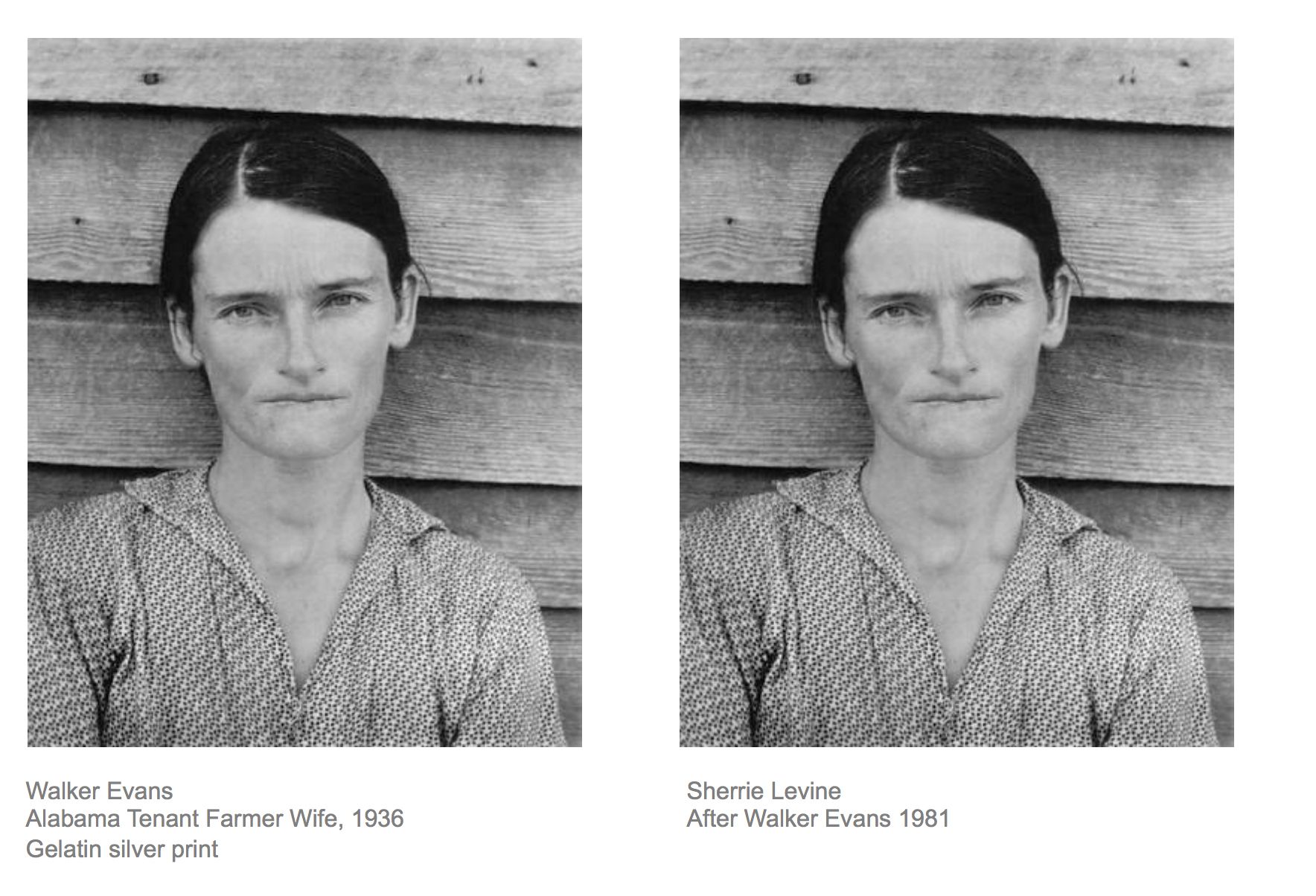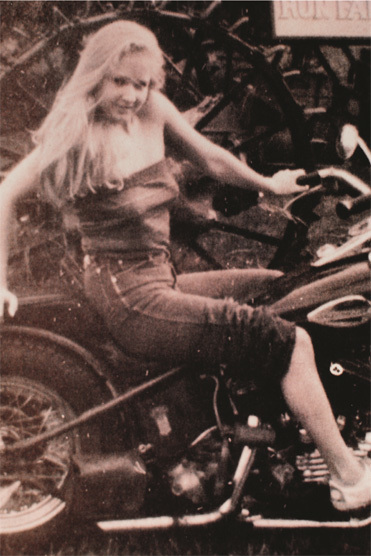trouble in paradise
- "touch me"
- not a strong, confronting gaze. kind of looking away
- white, no wrinkles, perfect skin, make-up, skinny
- sexualising women, mainly focussed on their sexuality & nudeness
- they're wearing kitchen mittens & cups
- "ethnic girl" & "three girls" (porn titles)
- compositions are off
- nudes
- lipstick smudges (stereotypical)
- discription feels off
- "dumb" girls, drinking alcohol, smoking, just sitting around
- only heterosexual scenarios
- busty girls, "perfect" bodies
- fetishising
- "found", thus where is the permission?
- girls shopping!! because that's all what girls do
- the talking bubbles that say stereotypical stuff such as "I really want a baby", "my feet hurt"
- all white ladies
- stereotypes...
-Sweet Disposition
- stereotype
- woman with cutting board. "cooking woman" scenario
- white
- submissive pose
- nude
- sexualised
- submissive pose
- white woman
- "idealistic" body
stereotypes:
- little girl in a dress with a "doll"
- man in a suit, seemingly working
- non-powerful woman
-
- objectified woman
-Video of sculpture being made of a female nude with the finished female nude next to it
- nude
- "cowboy and his girlfriend" thus belittling the woman as if she's solely and simply the strong man's girlfriend
-The idea that women belong to men "his girlfriend"
- not a strong pose. looks away. not confronting
- "damsel in distress"
- white (shocker)
- submissive look and pose
- white (agian)
- not a strong pose. looks away. not confronting
- showing vulnerability in a stereotypical way
- white
- sexualised woman
- it makes us feel really uncomfortable?
- it really feels like this is made for male enjoyment instead of it being about the woman's pleasure
-It was also placed next to a nude female sculpture
- white
- radiates pain and weakness... where are my strong ladies at?
- shopping cliché
- damsel in distress
Possible concepts
-We could do something like Sherrie Levine did 'After Walker Evans'
In the late 1970s and early 1980s, a group of artists including Cindy Sherman, Richard Prince, and Sherrie Levine—at the time dubbed the "Pictures" generation—began using photography to examine the strategies and codes of representation. In reshooting Marlboro advertisements, B-movie stills, and even classics of Modernist photography, these artists adopted dual roles as director and spectator. In their manipulated appropriations, these artists were not only exposing and dissembling mass-media fictions, but enacting more complicated scenarios of desire, identification, and loss.
In 1981, Levine photographed reproductions of Depression-era photographs by Walker Evans, such as this famous portrait of Allie Mae Burroughs, the wife of an Alabama sharecropper. The series, entitled After Walker Evans, became a landmark of postmodernism, both praised and attacked as a feminist hijacking of patriarchal authority, a critique of the commodification of art, and an elegy on the death of modernism. Far from a high-concept cheap shot, Levine’s works from this series tell the story of our perpetually dashed hopes to create meaning, the inability to recapture the past, and our own lost illusions.
-A re-appropriation of Richard Prince's 'Cowboys and girlfriends' as 'Girlfriends and Cowboys.'
"The present lot is from Prince’s series of works depicting “biker girls.” While we are used to seeing men in this context, Prince presents an alternative view of biker culture. As is typical of Prince’s works, the artist draws upon advertisements or other aspects of visual culture as the foundation for his works. Here, Prince has appropriated images from advertisements placed by women in biker magazines. He then re-photographs and enlarges the works, highlighting the women at the focus of the images, while simultaneously bringing to mind our ideas of gender roles in our culture."
However, these photographs are really sexualized. Could we find pictures of biker girls that aren't sexualized? Also, he is not just portraying women but also men? And not just that but he is calling Cowboys and girlfriends?? Discriptions don't match works.

-A series of photographs of females but instead of the damsel in distress or over sexualized look as seen in the exhibition we can make the girls look strong and empowering. We should also include women of other races, like people of colour and asians, which are very under-represented in this exhibition.
-
-An appropriation of "touch me" by Kirsten Geisler. We can redo it but instead just have the girl gaze right at the camera with a strong gaze and also a more realistic depiction of a woman. Instead of the "flawless and wrinkle free" look we can give her realistic features.
- Make it a woman of colour perhaps
- She has a strong, confronting look
-We could perhaps name it "Don't touch me"
-How do we create a 3D character? (CrazyTalk 8, Maya, Blender?)
-We will need people to model for this
-Maybe we can make it interactive?
-Installation
-An appropriation of Perry's ceramics of the girls. Instead portraying the girls as strong women and saying empowering phrases instead of "I'm so fat" and "My feet hurt."
Final Concept
-We're leaning towards the appropriation of the "Touch me"
-Do you dare to touch me? -> something happens
Teachers notes:
- Create virtual collection for him? To add to his?
- Think about the titles of the artworks/playing around with them
- "Do you dare to touch me"
Catherine feedback:
- pick another work that speaks more about the objectification of women;
- contextualise;
- in what way does it relate to chaddan himself?
- why is the sexualising etc still happening TODAY?
self notes:
- male gaze vs female gaze?
- zooming in on the artworks with a female gaze? how would we re-represent these artworks? make our own selection of his works and try to make it less problematic?

Not just showing heterosexual love, but also gay love
(as a reaction to the sexual drawings of William Crawford).
-We could do a photography series of these or drawings/sketches, film maybe?
- Or even recreate the sketches in LBGT+ scenarios? (not in a sexual way since oversexualising is already a problem in the queer community)
As a reaction to this work from the exhibition
Possible poses if we decide to go for drawing/painting
inspiration idea
for "don't touch me"
Touch me by Kirsten Geisler (1999)
- objectification and portrayal of women
- lack of diversity in race, gender and sexuality
- personal satire about him being rich and abusing his money and power whilst excluding strong women
-Rattan Chadha
Founder and CEO
Rattan is the founder and former CEO of lifestyle brand Mexx. After selling the company in 2004 he started his own private-equity firm: KRC Capital. Rattan is the founder and CEO of citizenM hotels, president and owner of the Royal Mougins Golf Resort, and controls investments in several other real-estate and fashion developments in India and America. As a philanthropist, Rattan has received a knighthood from the Queen of the Netherlands, as well as honours in the Netherlands and China for outstanding marketing and trading efforts.
-https://www.youtube.com/watch?v=J7FuBokQuSQ
A letter to Rattan
Dear Rattan Chadha,
After visiting your exhibition 'Trouble in Paradise' it is evident that your taste in art is very poor. You might not have noticed but you have no diversity in race, women are portrayed as weak, sexualized beings and this contradicts the statement that your collection is focused on the new and rebellious.
We understand that you might not care because you're very a very rich business man, having a net worth of US$ 600 million. However, if you want to participate in the art world as an art collector then maybe you should think about the consequences. The way women are portrayed in museums and exhibitions has been a problem for far too long, it's getting tiring to keep calling it out.
Regards,
Lara & Lisa
Dear Rattan Chadha,
It has come to our attention that your exhibition 'Trouble in Paradise' in Kunsthal Rotterdam which features your personal art collection was non-inclusive to different genders, sexualities and races, but it also correspondingly portrayed specifically women in a submissive and sexualised manner. Your collection mostly portrays white women that are nude, young and heterosexual that sexually and stereotypically represented thus this excludes everyone who does not fit within these labels. When you disclose your personal collection to the general public, you receive the responsibility of creating a safe space where people of all different identities feel included. Especially powerful men like you should use your position to create awareness for other identities and fair and accurate representation of women, who you clearly admire in some way.
Best regards,
Two women who felt excluded
Dear Rattan Chadha,
It has come to our attention that your exhibition 'Trouble in Paradise' in Kunsthal Rotterdam which features your personal art collection was non-inclusive to different genders, sexualities and races, but it also correspondingly portrayed specifically women in a submissive and sexualised manner. Your collection mostly portrays white women that are nude, young and heterosexual that sexually and stereotypically represented thus this excludes everyone who does not fit within these labels. When you disclose your personal collection to the general public, you receive the responsibility of creating a safe space where people of all different identities feel included. Especially powerful men like you should use your position to create awareness for other identities and fair and accurate representation of women, who you clearly admire in some way.
Best regards,
Two women who felt excluded
Format:
-Actual letter
-give it out to everyone maybe?
-record us reading it
-email?
- performative reading on friday?
The letter:
- less of an attack
- what do we want to achieve with the letter?
- visual showing
- denotation - connotations
- semiotics?
- facts? data?
6. Dumas, Marlene. Sad Romy, 2008 (crying lady)
7. Dolron, Désirée. Xteriors IV (Brigitte), 2007 (ginger lady)
8. Sucia, Mircea. Me and the Devil, 2017 (sex lady)
2. Breitz, Candice. Queen (A Portrait of Madonna), 2005 (screens)
Ackermann, Rita. Cold Turkey and Bonbons, 1993